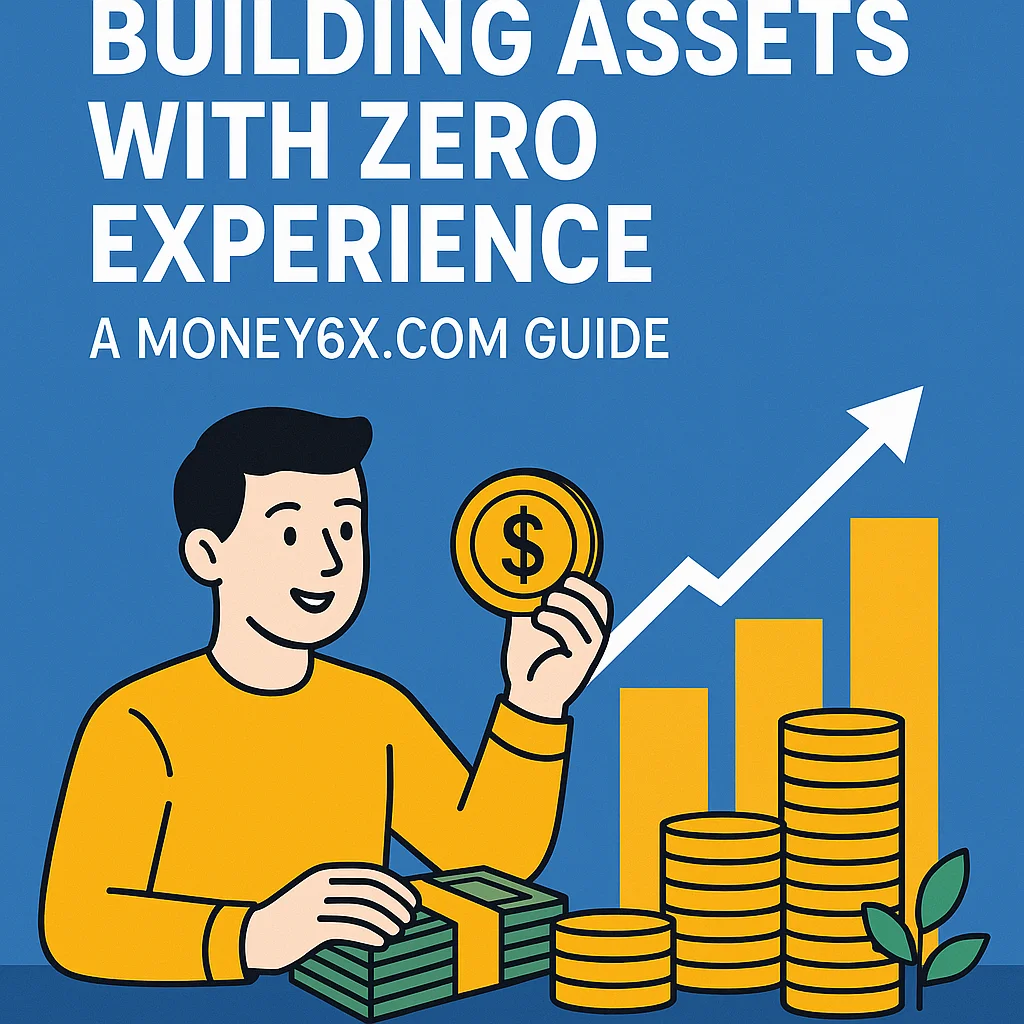Are you starting from scratch and wondering how to build assets without any financial experience? You’re not alone. Many people feel overwhelmed when they hear terms like investments, equity, or passive income. The good news is—you don’t need to be a financial expert to get started. In this practical Money6x.com guide, we’ll walk you through step-by-step strategies to help you begin your asset-building journey, even if you’re starting with nothing but determination.
Why Building Assets Matters
Before we dive into the how-to, let’s understand the why behind asset building.
Financial Stability
Assets are anything you own that has value. They can generate income or appreciate over time, which increases your net worth and financial freedom.
Protection Against Uncertainty
Whether it’s job loss, emergencies, or retirement, assets give you a financial cushion to rely on.
Wealth Generation
When managed properly, assets work for you. This can eventually lead to long-term financial independence.
Understand What Counts as an Asset
You don’t need to buy property or stocks right away. Assets can be simple and attainable.
Tangible vs. Intangible Assets
- Tangible: Physical items like real estate, gold, vehicles (with resale value)
- Intangible: Investments, digital products, intellectual property, savings
Income-Producing vs. Non-Income Assets
- Income-Producing: Rental property, dividend stocks, a side business
- Non-Income: A personal car or home you live in (unless rented)
- Build the Right Mindset
When starting out, your mindset is your most valuable tool.
Shift from Spending to Saving
Stop looking at money just as a means to spend. Think of each dollar as a potential seed to grow your future.
Long-Term Thinking
Assets are not a get-rich-quick strategy. They’re about long-term value and security.
Start with Small, Achievable Goals
Instead of aiming for big investments, start small and grow gradually.
Create a Financial Roadmap
- Define your goals (owning a house, building a business, etc.)
- Set short-term and long-term milestones
- Track your progress monthly
Use What You Already Have
Your time, skills, and network are also assets. For example, if you’re good at writing, consider creating digital products or freelance services.
Save Consistently – Even if It’s Just $5
Open a Separate Savings Account
Designate one account strictly for asset-building purposes.
Use the 50/30/20 Rule
- 50%: Essentials (rent, food, bills)
- 30%: Wants (entertainment, travel)
- 20%: Savings and debt repayment
Even if you can’t follow this exactly, just saving something regularly is key.
Learn the Basics of Investing
No prior experience? No problem. Start with beginner-friendly platforms and tools.
Use Robo-Advisors
Platforms like Acorns, Wealthfront, or Stash automate your investing using small amounts.
Learn About Index Funds
Index funds are low-risk and diversify your money across hundreds of companies. They’re a great first step into the stock market.
Create a Digital Asset
You don’t need a physical product to start building value.
Examples of Digital Assets
- E-books
- Online courses
- Blogs or YouTube channels
- Stock photography
- Mobile apps
Even if you only make a few dollars at first, these assets can become passive income streams over time.
Build an Emergency Fund
Before you grow assets aggressively, secure yourself from unexpected setbacks.
How Much Should You Save?
Aim for 3–6 months’ worth of living expenses.
Where to Keep It?
Choose high-yield savings accounts or money market accounts to grow your cash safely.
Explore Real Estate with Low Entry Barriers
You might think real estate is out of reach, but there are beginner-friendly options.
Try REITs (Real Estate Investment Trusts)
These are companies that own or finance income-producing real estate. You can buy shares like stocks.
Consider House Hacking
If you buy a multi-unit home and live in one unit while renting the others, the rent can cover your mortgage.
Start a Microbusiness
Even without experience, starting a small online or service-based business can be an excellent way to build an asset.
Low-Investment Business Ideas
- Dropshipping
- Print-on-demand
- Freelance services (writing, design, tutoring)
- Social media management
- Virtual assistant work
All these can be scaled and eventually run with minimal input, creating a long-term asset.
Monetize Your Skills and Knowledge
You don’t need to reinvent the wheel. Use what you already know.
Turn Skills Into Products
- Create a course on platforms like Udemy or Teachable
- Offer coaching or consulting
- License your content
Once published or set up, these often generate passive income with little upkeep.
Automate Your Growth
Automation helps you grow without thinking about it daily.
Use Auto-Investing Tools
Many platforms allow you to auto-invest a portion of your paycheck into mutual funds or ETFs.
Set Automatic Transfers
Schedule regular transfers from your checking to your savings or investment accounts.
Educate Yourself Continuously
Even if you’re starting at zero, growing your knowledge is free and powerful.
Where to Learn for Free
- YouTube financial channels
- Free courses on Coursera or Khan Academy
- Finance podcasts like “BiggerPockets” or “The Ramsey Show”
- Blogs like Money6x.com for practical, action-based guides
Avoid Bad Debt
Not all debt is created equal. Knowing the difference is crucial for asset building.
Good Debt vs. Bad Debt
- Good Debt: Student loans, business loans, mortgages (if they help grow value)
- Bad Debt: High-interest credit card debt, payday loans
Avoid borrowing for liabilities like luxury items or vacations.
Network and Learn from Others
The people around you can open doors.
Join Communities
- Financial forums
- Local investment clubs
- Online groups focused on asset building
Ask questions, share your progress, and learn from others’ experiences.
Track and Adjust Regularly
Asset building is a dynamic process. Review and adjust your strategy every few months.
Use Tools Like
- Google Sheets or Excel for budgeting
- Budgeting apps like Mint or YNAB
- Net worth trackers
If something isn’t working, pivot your approach rather than quitting altogether.
Final Thoughts
Starting with zero experience doesn’t mean you’re stuck forever. With the right mindset, basic financial habits, and consistent action, you can begin building real assets that work for you over time. Whether you choose digital products, small investments, or microbusinesses, each step adds up.
Remember, the path to building wealth isn’t about taking huge risks or waiting for a windfall. It’s about making smart, simple decisions repeatedly over time.
So, start today—even if you only have a few dollars or just an idea. With this Money6x.com guide, you now have a clear roadmap to begin building your financial future, one asset at a time.


